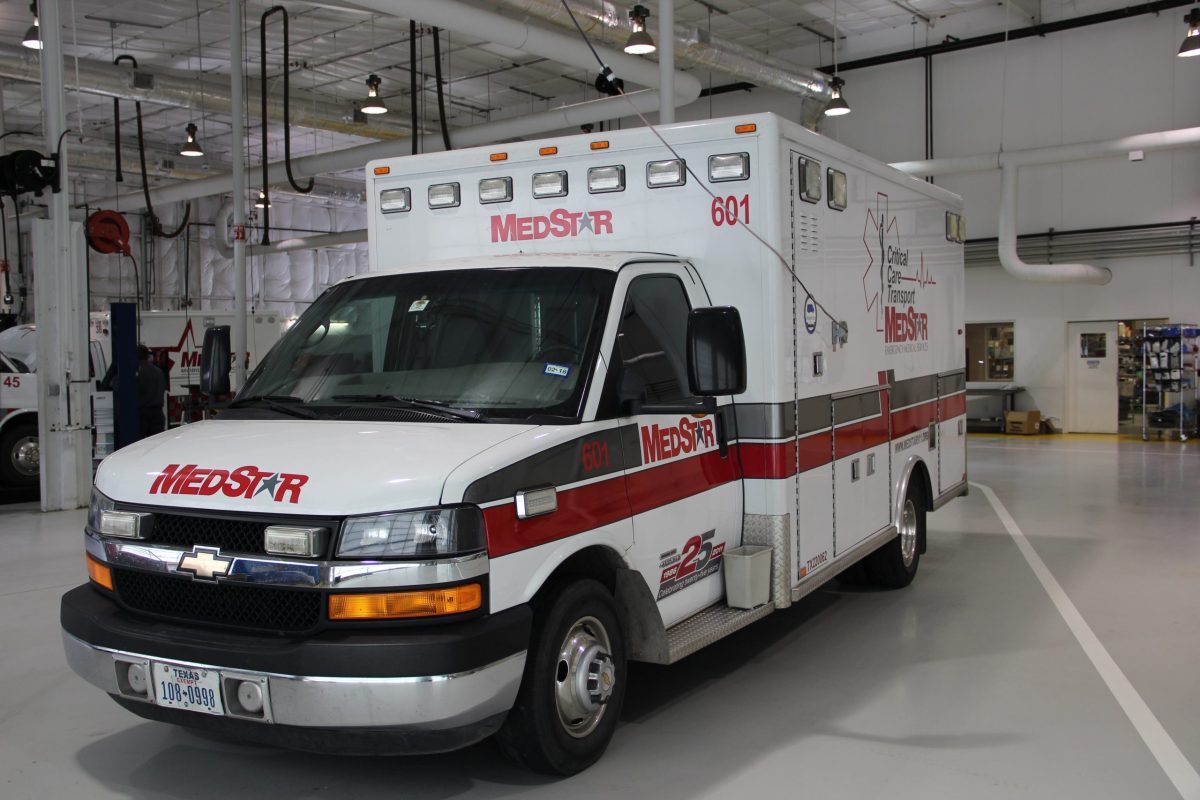
West of Six Flags and a few miles off of I-30, community paramedic Kyle Barbour swings huge bag of medical supplies onto his shoulders and knocks on his third door of the day. It's a little house consecutively of little '60s-era houses, and a retired DART bus with splintered windows rests around the front lawn.
\”I call him Mr. O,\” Kyle says just before the door opens. It's dark inside, light glowing from just one of the four overhead lights and the TV where daytime television-a game show-plays silently. Mr. O sits inside a nearby desk chair. He speaks broken English and the wife passes through now and then with her cane and her dog.
Kyle sets his Surface Tablet on the bed where he is able to reach it and kneels down beside him. \”Hey, Mr. O, how are you feeling today?\” he asks brightly and begins to take his blood pressure. The questions continue to come. \”How's your breathing? How's your walking? You've been taking your medication?\”
Mr. O was launched from the hospital recently; in fact, this is only Kyle's vacation home trip to check into him. He's homebound internally slippers, though Kyle suggests he spend some time around the porch. It's a beautiful early-spring day in Fort Worth.
During their conversation, a mix of small talk and medical jargon, Mr. O lets with that he doesn't have four from the medications he needs, nor does he have transportation to go to the pharmacy. The physical evaluation is over, but Kyle's work has just begun.
Over the path of three telephone calls as well as an hour, Kyle calls a clinic to discuss funding and Mr. O's social worker to go over how he is able to get his medication.
\”Here's what I will do,\” Kyle says eventually, handing him a credit card applicatoin to fill out for any program that provides free rides towards the pharmacy and doctor's appointments for those who can't get there by themselves. \”I'm here to help. However can. Fill this out and I'll take it from there.\”
Kyle originally trained to be a paramedic on a fire truck. But the ER, because he puts it, grabbed him. After 10 years like a paramedic, Kyle now spends his days driving around greater Fort Worth attending to patients in their own individual homes. It's all regulated part of Fort Worth MedStar's Mobile Healthcare Unit.
\”We're here to keep you against falling with the gaps, wherever the gaps are,\” Kyle says because he drives to another patient's house. \”We're trying to keep people out of the hospital.\”
Fort Worth's MedStar fields 400 calls in a single day and ferries an average of 90,000 people to area ERs each year. In 2008, their data says they'd transported exactly the same 21 individual patients to area ERs a lot more than 2,000 times, leading to $962,429 in ambulance charges alone. They realized that it must be due to a high number of \”ER abusers,\” or individuals who call emergency services up to 15 times in a 90-day period, often for problems that are not emergencies. It was baffling, but also stress on time and resources for the individual, MedStar and also the hospital staff, especially considering that hospitals from coast to coast are experiencing staffing issues and also the worldwide shortage of nurses, reported through the International Council of Nurses in 2004, still persists. Worse, hospitals will also be penalized by the government for readmissions.
So in '09, Fort Worth's ambulance service, MedStar, started to send community paramedics like Kyle on home visits.
\”They could be taken on this program to see why they call so much,\” Kyle explains. \”Sometimes it's because likely to untreated recurring issue, sometimes it's hypochondria, a misdiagnosis, maybe they do not know what else to complete, or maybe there is a psychological thing happening.\”
\”You can speak with patients within the ER, but when you get someone within their home and sit down and speak with them, they listen better, we listen better-communication will be a lot better,\” Kyle summarizes. \”We do labwork. We can take a look at their electrolytes, kidney function, we all do everything with Congestive Heart Failure (CHF) patients we are able to make sure their kidneys are okay-It's similar to how doctors i did so house visits. We're usually on the phone with someone and we communicate with their primary care doctors.\”
The program has expanded beyond system abusers. Often, through partnerships with hospitals and JPS Health Network, patients who are deemed in danger of readmission in Thirty days or less, are referred to MedStar for care that not only prevents them from going back to the ER but often saves their lives.
Most of Kyle's people are around 40 to Six decades old, earning a minimal income and without insurance. He's had the opportunity to prevent his patients from taking a lot of pills or getting their dosages confused once they're released from the hospital. \”Doctors feel more comfortable sending patients home when they know there's somebody that can go available and appearance on them,\” Kyle explains. \”Some doctors are right there around and love us; others have no idea who we are yet.\”
The idea is catching on like wildfire. Medical students and hospital representatives throughout the planet have visited Fort Worth to see the program. In Plano, there is a similar process where local EMS staff workers coordinate with certain hospitals to follow up on patients who've been recently released.
After working with Mr. O's caseworker to make sure he has got the Meals on Wheels he needs, Kyle makes an extra stop before his next patient to get his prescription, which is taken care of via a nonprofit.
\”For some people, this is their social time. You can hold them accountable and look after them and they bond along with you. People need that. Sometimes they don't have family around,\” he states.

